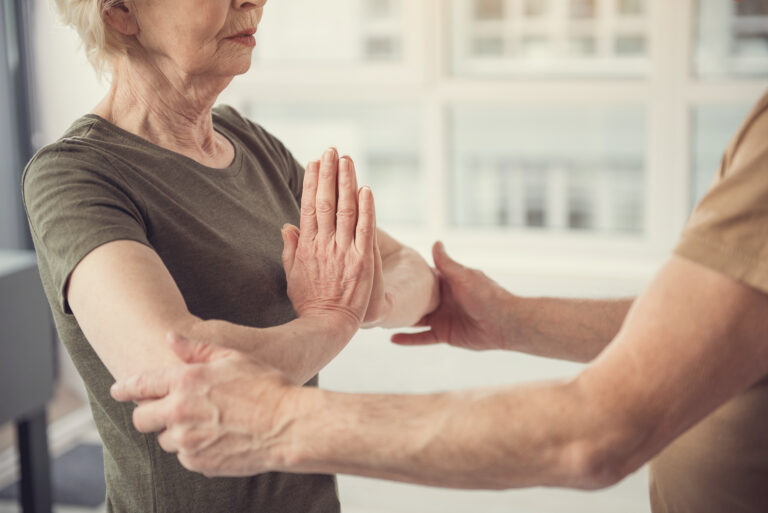Alzheimer’s disease is a progressive neurological disorder that affects millions of people around the world. One of the most challenging aspects of this disease is the gradual loss of memory and cognitive abilities, which can make everyday tasks like navigating stairs difficult and dangerous for those living with the disease. As a loved one, friend, or caregiver of someone with Alzheimer’s, it is essential to understand how to help them safely navigate stairs to prevent accidents and maintain their independence. In this article, we will discuss some tips and techniques on how to assist a person with Alzheimer’s in using stairs.
1. Understand the Impact of Alzheimer’s on Stair Navigation
Before we dive into specific strategies for helping someone with Alzheimer’s navigate stairs, it is crucial to understand how the disease affects their ability to do so. Alzheimer’s primarily affects the brain, causing changes in memory, thinking, and behavior. As the disease progresses, it can also lead to mobility issues, making stairs a significant obstacle for those living with Alzheimer’s.
2. Assess the Person’s Physical Capabilities
The first step in helping someone with Alzheimer’s navigate stairs is to assess their physical capabilities. Some individuals may still have enough strength and coordination to go up and down the stairs independently, while others may require assistance. Observe how they move, their balance, and any difficulties they may have in lifting their feet or gripping onto handrails. This information will help you determine the level of support they need.
3. Make Necessary Modifications to the Stairs
If possible, make modifications to the stairs to make them safer and more accessible for someone with Alzheimer’s. Install handrails on both sides of the stairs, ensure they are sturdy and easy to grip, and add non-slip treads or carpets to prevent slips and falls. Also, make sure the stairs are well-lit and free of clutter.
4. Encourage the Use of Assistive Devices
For individuals who have trouble with balance or strength, using assistive devices such as a cane, walker, or stair lift can provide much-needed support and stability. If the person with Alzheimer’s is not using any assistive devices, now might be the right time to explore options with their doctor or a physical therapist.
5. Use Simple and Clear Instructions
When helping someone with Alzheimer’s navigate stairs, it is important to use simple and clear instructions. Avoid complicated or lengthy explanations, as this can be overwhelming for someone with memory loss. Instead, use short, easy-to-follow instructions like “hold onto the railing” or “take one step at a time.” It may also help to demonstrate the action first to make it easier for them to understand.
6. Provide Physical Support
For individuals who require physical support while using stairs, it is crucial to do so safely and effectively. Stand close to the person and position yourself slightly behind them, allowing them to hold onto your arm or shoulder for support. Avoid pulling or pushing them and move at a slow and comfortable pace.
7. Be Patient and Encouraging
Navigating stairs can be a daunting task for someone with Alzheimer’s, so it is essential to be patient and encouraging. Give them enough time to process and follow instructions, and praise them for their efforts. Avoid criticizing or rushing them, as this can cause frustration and increase the risk of accidents.
8. Allow for Rest Breaks
For individuals who have difficulty with mobility, going up and down stairs can be tiring and exhausting. Allow for rest breaks when necessary, and encourage them to take their time. Rushing can lead to falls or accidents, so it is crucial to maintain a slow and steady pace.
9. Consider Alternative Options
If navigating stairs becomes too challenging or dangerous for the person with Alzheimer’s, it may be necessary to consider alternative options. This could include installing a stairlift or moving their bedroom to the ground floor. It is essential to assess the person’s safety and well-being regularly and make necessary adjustments as the disease progresses.
10. Seek Professional Help
Caring for someone with Alzheimer’s can be physically and emotionally demanding. It is vital to seek professional help if you are feeling overwhelmed or unable to provide the necessary care and support. A medical professional, therapist, or support group can provide valuable resources and assistance to help you and your loved one manage the challenges of Alzheimer’s.
In conclusion, helping a person with Alzheimer’s navigate stairs may require some modifications and adjustments, but with patience, understanding, and support, it is possible to do so safely and effectively. Remember to assess their capabilities, provide clear instructions and physical support, and always prioritize their safety. By following these tips, you can help maintain their independence and quality of life while living with Alzheimer’s.





